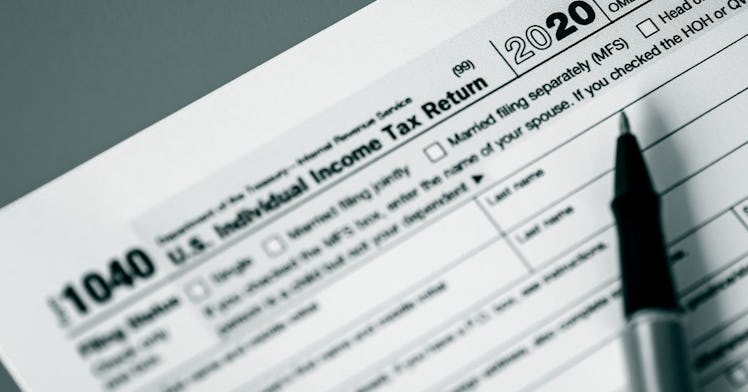Millions of Americans Are Still Waiting on Their 2020 Tax Returns
If you're one of them, you may be in for a bigger payday. Here's what to know.

If the Internal Revenue Service still owes you a tax return, you are not alone.
The agency, battered by years of budget cuts and reeling from the extraordinary chaos of COVID-19, still had 2.7 million individual tax returns to be processed as of October 30, according to the National Taxpayer Advocate.
Setting aside the problem with the tax enforcement and collection agency of the United States failing to keep up with its workload, the delay is a hardship for millions who, given the financial strain COVID-19 put on families, likely need their money as soon as possible.
But it’s not all bad news—here’s what taxpayers still waiting for their returns need to know.
Why are refunds taking so long?
This ProPublica series provides the best explanation of the causes and effects of the decline of the IRS, starting with GOP victories in the 1994 midterms that made “abolish the IRS” a mainstream position in the Republican Party. While it still exists, the GOP set about weakening the agency through hearings on alleged agency abuses, a subsequent bipartisan bill curbing its authority, and an enforcement budget that fell by 23 percent between 2010 and 2018.
When the pandemic hit, the agency was under-resourced and ill-prepared to adapt to the realities of remote work. A GAO report concluded that “IRS’s overall 2020 performance was significantly impacted by its reliance on manual processes such as for paper returns, and its limited ability to process returns remotely while processing centers were closed. As a result, as of December 2020, IRS had a significant backlog of unprocessed returns and taxpayer correspondence.” The story is largely the same in 2021.
When can taxpayers expect to get paid?
The current operational time on the IRS operational page is more than 20 weeks, but the National Taxpayer Advocate found that the processing time is “considerably longer than 20 weeks.” The IRS is processing returns in the order they were received, and since this year’s filing deadline was extended to May 17, 20 weeks from the filing deadline was October 4th.
So while “considerably longer” isn’t all that precise, it would certainly seem to mean that last-minute filers could still have a decent wait ahead of them.
Is there any good news?
Like taxpayers who file their returns late, the IRS is legally obligated to pay interest on any refunds it sends out late. So while millions of returns are delayed, when they finally do hit bank accounts they’ll be a bit bigger than they would’ve been had they been paid out on time. And that’s on top of refunds being 11 percent bigger this year than last, $2,775 versus $2,495.
Interest starts to accrue from the original filing due date of April 15, but it’s not owed on returns received 45 days or less after that date. Once a return has been delayed that long, it’s paid out at a quarterly adjusted rate of three percent more than the federal short-term rate. In the fourth quarter of 2021, the interest rate is three percent.
That doesn’t add up to a ton of money for most people, but it’s certainly better than waiting too long to receive your tax return and getting nothing for the trouble.
What can taxpayers do?
Unfortunately, there’s not really a way for taxpayers to get their refunds faster. Long term, properly funding the IRS is the only way to ensure that widespread delays like this one don’t happen. In the short term, with IRS call centers overwhelmed, the only thing you can do is check the Where’s My Refund? tool on irs.gov and cross your fingers that your return will come soon.
And given the experience millions are having this year, it’s probably not a bad idea to file your 2021 taxes as early in 2022 as you can.